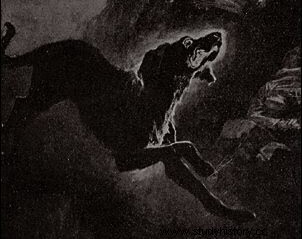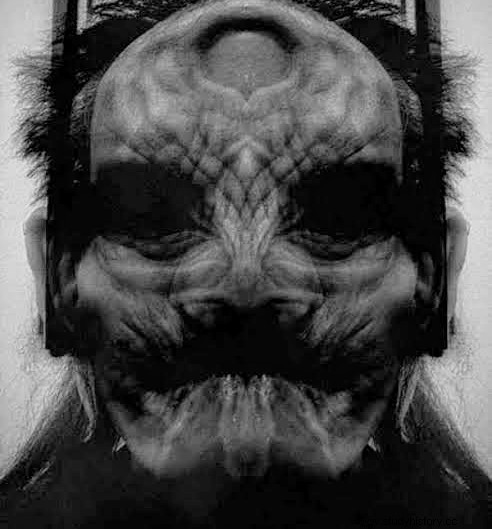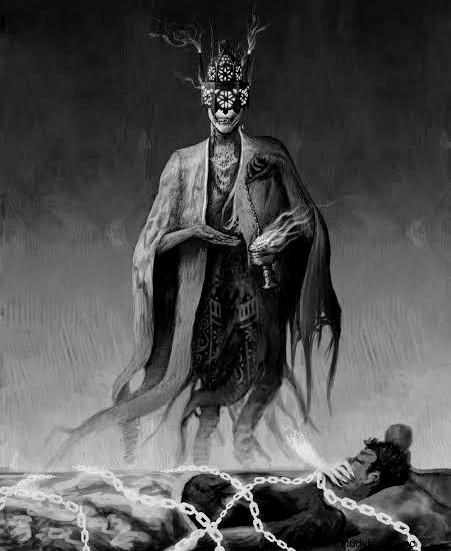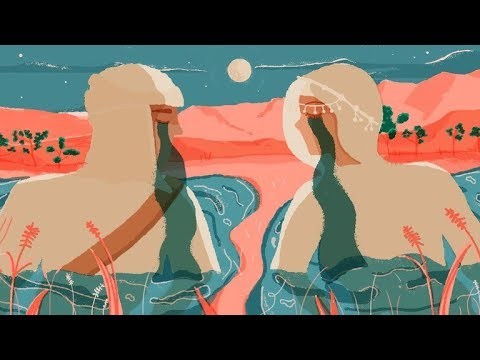Located on the northwestern edge of Africa, Morocco is just a few miles away from Europe. For centuries, Morocco served as the link between the two continents. Due to this special geographical location, the country was exposed to a myriad of cultural influences. This included Native Berbers, sub-Saharan African Jews, Romans and Phoenicians. Later Morocco was also influenced by the Arabs, then came the Portuguese, the Spaniards and finally the French. These different ethnic interactions left a big mark on the country's culture, especially Moroccan myths, folklore and legends.
Myths and legends abounding in Moroccan culture are full of tales of magic, stories of love and fear and epic characters. These stories, whose origins are now lost in time, are a mixture of both fact and fiction. The interweaving of Moroccan myths, legends and true stories creates a rich oral tradition.
Moroccan myths and folk tales differ from region to region. The stories from each region are the result of many stories told by different narrators, each adding their own elements to the story. Moroccan folklore is very similar to a mosaic. Smaller individual pieces that are beautiful on their own, but that do not make sense unless they come together, are put together to create a colorful, complete image. Some of the themes in Moroccan myths are universal. Many of the folk tales involve native travel and wildlife. They carry themes centered on Islam, family and respect as the main virtue.
Aisha kandisha
Aisha Kandisha is a female mythical figure in northern Moroccan folk tales. She is a mythical character who is similar to Jinn, but also has her own personality. Aisha Kandisha is portrayed as a beautiful young woman who has the hooves of an animal like a camel or goat. It is said that she uses her amazing beauty to seduce the local young men and then either drive them crazy or kill them. She entices them either with her beauty or by posing as spouses. According to other versions of the myth, she pretends to be a cluteless hiker waiting for a victim. Many truck drivers claim to have met her along the northern part of the country.

According to some researchers, the name 'Aisha Kandisha' is of Eastern origin. It is suggested that it was the Phoenician colonies of North Africa that introduced this mythical creature. Later she interfered in Moroccan or Islamic traditions with her evil nature and connection with water bodies. Researchers also suggest that Aisha Kandisha's consort, co-worker Hammu Qayyu, may have been inspired by Hammon, the Carthaginian god.
A recent suggestion about the origin of Aisha Kandisha is that she is derived from a real historical figure. According to this, her origins lie in a Moroccan countess from el Jadida. It is alleged that the Portuguese murdered her husband and family. Grief made her the frightening figure she is believed to be today. The Countess had helped defeat the Portuguese by seducing their soldiers. The soldiers were later killed by the Moroccan soldiers and lay waiting. Many believe in her goodness and honor her. They light candles and sacrifice an animal like a goat or rooster.
Varying descriptions
Other descriptions and characteristics of her vary according to different regions. This mythical creature is generally believed to live where there is a source of water. In Tangier, the natives believe that this is the sea. In Tetouan, it is believed to be the Martil River. Among Beni Ahsen (an Arab-Moroccan tribe) it is believed that Aisha Kandisha lives in the river Sebou. In Fes, she lives in the drainage canal.
It is said that Aisha Kandisha uses her amazing beauty to seduce the local young men and then either drive them crazy or kill them. She entices them either with her beauty or by posing as spouses. Another local belief in her, as for the Beni Ahsen tribe, is that she is afraid of needles and steel knives. Beni Ahsen also believes she has a husband or consort named Hammu Qayyu. In the southern parts of the country, including Doukkala, Aisha Kandisha is known as Kharaja.
According to Buffis, Aisha Kandisha is wearing black clothes and has hoof feet like a camel. She is an extremely ill sign for pregnant women, who are said to lose the baby if they see her. Anyone who is obsessed with Aisha Kandisha is said to bark or bray like an animal. The buffs also believe that she is just one of the many female jinns named Aisha. They believe in many of them, including Sudanese Aisha and Aisha of the Sea, all considered to be unique entities.
The Cemetery Mule
The history of the cemetery mules originates from among the native Berber folklore of the Atlas Mountains. According to legend, she is a petrified animal. As with Aisha Kandisha, her appearance varies by region. According to some natives, she is nothing more than a mule pulling heavy chains behind her. Others believe she is half human and half animal, like the centaurs in Greek mythology.

Legend has it that the cemetery mule was originally a recently widowed woman. But before the necessary mourning period was over, she had an affair with another man. An angry god cursed her and changed her appearance. The curse causes the woman to rest with the dead during the day. After the sun goes down, she scratches herself while screaming in pain. She then wanders around the cemetery and noisily pulls the heavy chains behind her. When dawn comes again, she returns to the resting place.
The stories surrounding the mule cemetery vary. Some claim that she kills grave robbers and sometimes entices men to climb on her back, which she then takes back underground and devours. Other versions suggest that she has the ability to shape herself. She would take the form of a relative and walk around knocking on doors, kidnapping men to devour them from her grave. Berber natives claim that her screams and the sound of her chains can be heard. Men tend to avoid going to cemeteries in order not to fall victim to the cemetery.
Boukhencha

Probably one of the oldest creatures in folklore, ogre is one of the scary characters that most Moroccan children would be familiar with. Boukhencha is the Moroccan version of the troll. While the term simply means a man with a sack or a purse, Moroccans do not hesitate to paint the most gruesome image of the troll to keep the children in line. He is depicted as a huge, cruel human figure who mostly enjoys human flesh, especially children. Legend has it that the boukhencha live in dark, scary, isolated areas. These include caves, mountains, forests and swamps.
The stories depict the boukhencha as a wandering vagabond, roaming the villages and streets. Children are told that he carries the bag around to kidnap children and takes them back to his den and eats them. Boukhencha is not the only ogre in Moroccan folk tales. Others include Kho-Kho bla and mama ghouls.
Shamharush
Shamharoush is one of the most prominent supernatural creatures believed to exist not only in Moroccan folk tales but also in many other cultures. Belief in these spirits goes back centuries. Belief in them varies.
Shamharoush is a spirit that can take both humans and animals. They also have the ability to own people. There are both kind and benevolent spirits and evil, malicious ones as well. Although this belief is universal, other stories of spirits are strongly influenced by different folklore. Some beliefs portray these beings as repulsive creatures that have supernatural powers. They live in caves, deserts and other dirty places. According to some, they would never miss a chance to harm people. They are blamed for any accident, bad luck, illness or death that afflicts people. Therefore, people try to avoid making them angry by reading religious words.
Boughettat

Before medical science called sleep paralysis a medical condition, Moroccan natives gave it something caused by evil spirits. Natives tell different versions of these demons, known as Boughettat, which paralyze them in their sleep to devour them. One version claims that this malevolent spirit is an old man with a hunchback, big eyes, young hair and terrible sharp teeth. According to another description, the spirit was in the form of an old witch who smiles wickedly.
Boughettat makes unwanted visits to people in their sleep. According to Moroccan myth, this evil spirit paralyzes the sleeping victim, climbs on his chest and continues to strangle them. The victim is aware of what is happening, but is unable to scream, talk or move. During such an episode, the person may hallucinate, feel or hear things that may not be real. The condition often results in panic and fear.
The legend of Lake Tislit and Isli

One of the main languages spoken in Morocco in the past was Amazigh. In the Atlas Mountains and certain villages, few of the natives still speak this language. Every single place in Morocco has a deep, meaningful name attached to it in Amazigh. In the town of Imilchil in the Atlas Mountains there are two lakes, Isli and Tislit, or the Moroccan Romeo and Juliette. The names come from a legend that the natives have ascribed to the twin lakes. And out of the legend, a festival was also born.
The story is a typically forbidden love story. One hundred years ago, a young boy and girl fell in love. The problem was that they belonged to different tribes. The boy belonged to the Ait Brahim tribe, while the girl came from the Ait Ya'za tribe. And to make matters even more complicated, these tribes were also sworn enemies. The young couple could not stand the separation, but at the same time could not be disobedient to their parents. The tribal tradition was and still is a fairly large agreement in Morocco. So the couple was forbidden to marry.
What happened next was that the couple cried so much that they cried to death. Their tears were so much that they combined to form the two lakes. It's a version of the story. Another claims that the tears formed the two lakes, and instead of living apart, the couple drowned themselves in the lake. The girl's lake was named Lake Tislit, which means breach of the Berber language. As for the boy's lake, it was called Isli Lake, which meant groom. Legend has it that they come out of the lakes every night to meet each other.
Marriage Festival
To this day, the Twin Lakes attract many visitors. But more than any other, the lakes are a central point for couples, and of course for the marriage festival. According to legend, it was the couple's parents who started the festival. The children's death led to guilt, and to honor the young couple's love, they started the marriage festival. Also known as the Betrothal Festival, young couples meet to tie the knot on the spot.
The festival is celebrated in September and lasts for three days. It is estimated that around fifty couples tie the knot at the festival each year. Many have also claimed that they met their future partners while visiting the Twin Lakes. The marriage festival is traditional and lively, combined with music, dance and songs. Drumming is also included. The colorful costumes, food and drink only contribute to the festivities. In true tribe and traditional style, young girls are accompanied by their parents. Many suggestions take place by the lakes.
The significance of Moroccan myths and legends
The tradition of storytelling in Morocco goes back over a thousand years. Berber tribes and kings ruled the country. The country grew exponentially from the spice and gold trade. Many cultures and ethnicities are mixed together. Storytelling was a way of perpetuating and preserving cultural beliefs, myths and legends. In addition, it served as a form of entertainment during the long winter nights.
While Moroccan myths are important in the country's culture, people's interests have changed rapidly. Globalization and technology have affected them more. In the past, the art of telling stories was found everywhere in the cities of Morocco. Today, there are only a few storytellers. To keep the history tradition alive, some old merchants have taken it upon themselves to teach young apprentices. They teach them the Moroccan myths and legends.
The conclusion
Traditional storytelling, myths and legends are not just about history. They are a window into the country's past, culture, tradition and heritage. Moroccan myths and legends developed both as a way of teaching the ancients and also as a form of entertainment.
